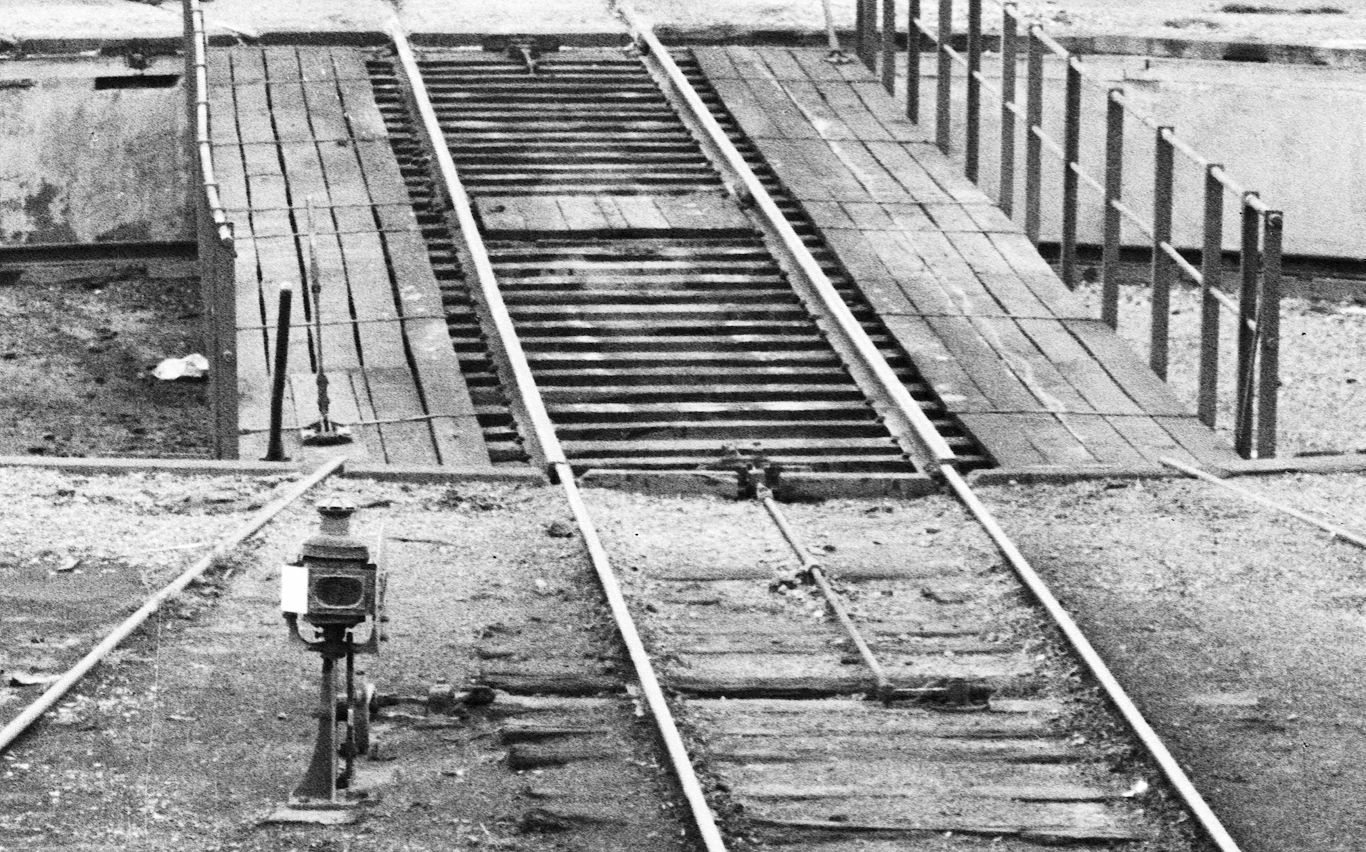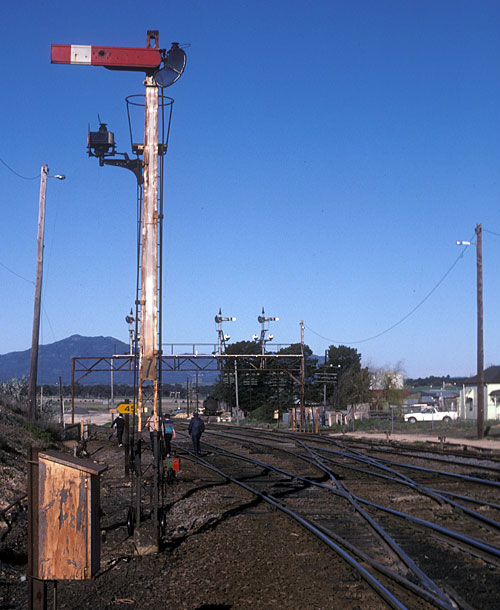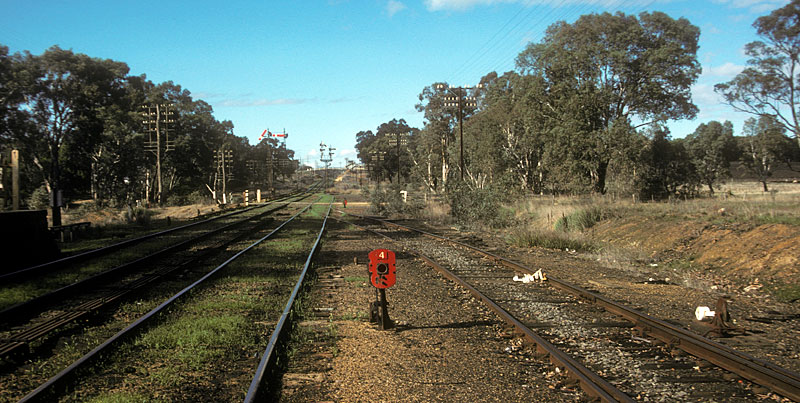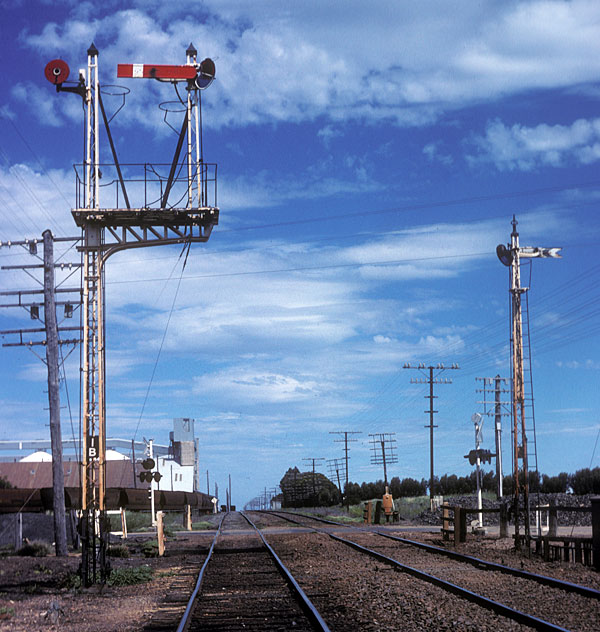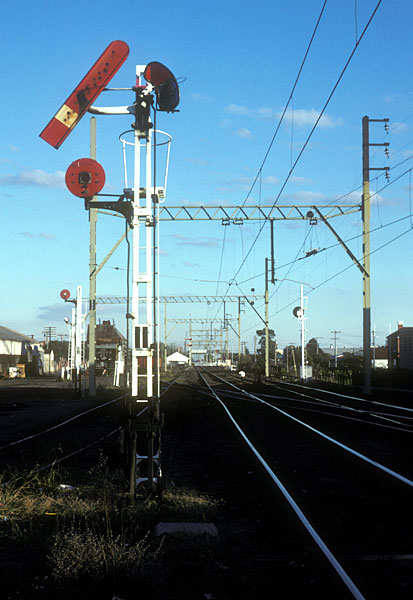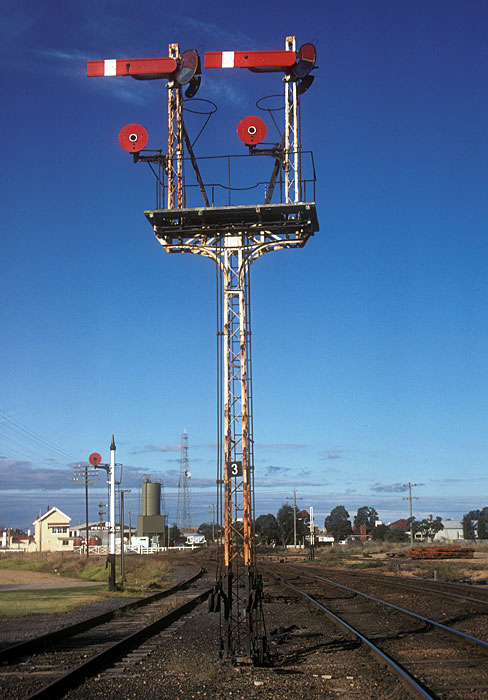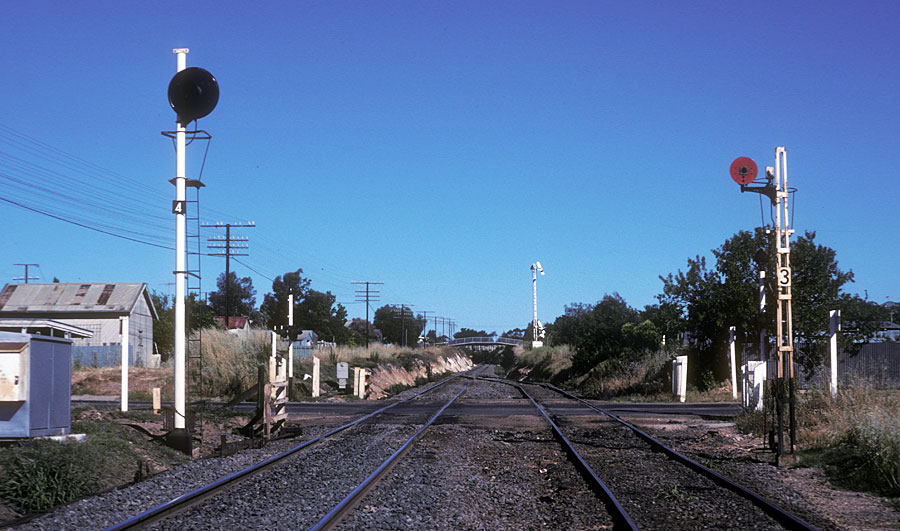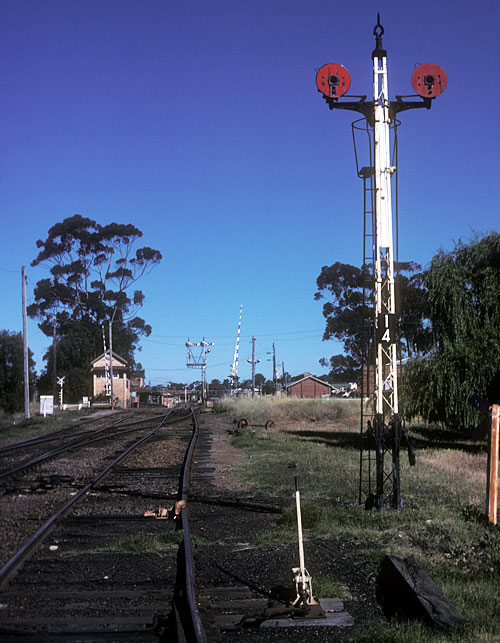2 position disc signals
Another difference between a disc signal and a home signal is that at many locations a single disc signal could apply to multiple tracks. In these cases point indicators were often used in conjunction with the disc to indicate the track that the points were set for.
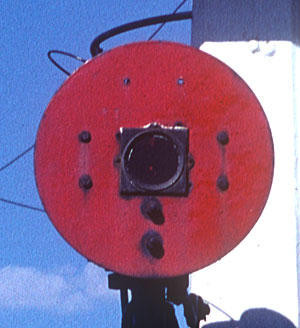
Below is from the 1966 Rules & Regulations.
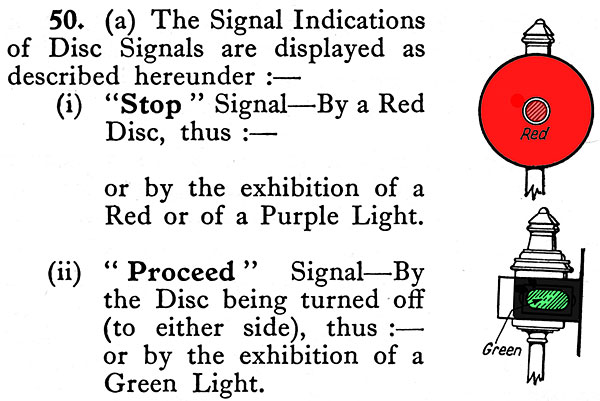
Note, the use of purple in disc signals was discontinued many years ago.
|
A disc signal at the PROCEED position
|
A disc signal at the STOP position
|
| Post 7 at Ararat. The disc was for moves from the yard towards the loco depot. Photo 1985 | Post 7 at Glenorchy. This disc was for moves from the track in the foreground towards the home and disc signal seen in the middle of the photo. Photo 1982. |
| ABOVE: For clearance reasons some disc signals could not be mounted on a post and were simply mounted on the ground, they were known as "ground discs" In some cases, again for clearance purposes, the sides of the disc were cut off as with this example at Great Western. Note the rodded derail just ahead of the disc to protect errant wagons from rolling out of the siding onto the #2 road. Photo 1982. CLICK HERE for Great Western's signal diagram
RIGHT: Side view of an electrically lit ground disc at Nth Geelong, 1986 |
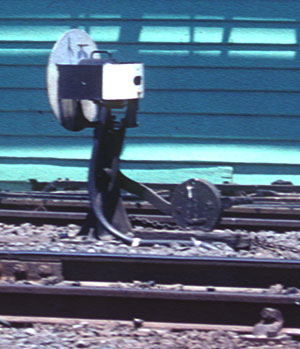 |
| Here we have a ground disc on the left and a disc mounted on a post on the right. In this case the mainline protection is afforded by catch points. Glenorchy 1982. CLICK HERE for Glenorchy's signal diagram |
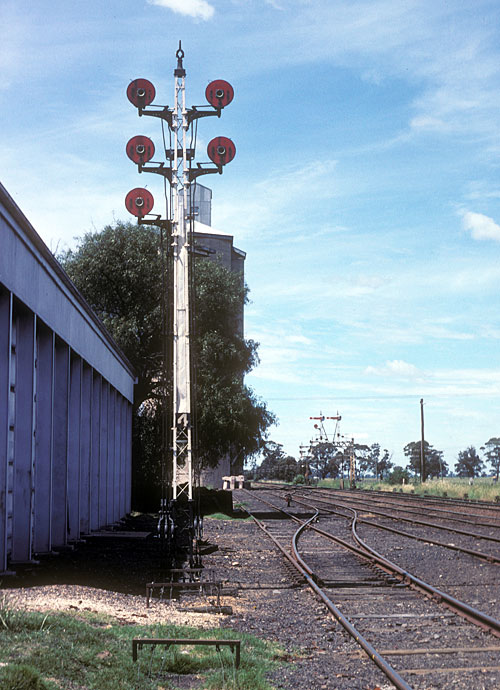 |
The prize for the most over signaled yard on the Victorian Railways may have been Lubeck. It was quite a simple layout and yet it contained a signal for almost every possible move. This modest little station boasted this 5 disc post that would have felt right at home in Flinders Street yard! CLICK HERE for Lubeck's signal diagram. The 3 discs on the left applied out of the left hand track, 4 road and the 2 discs on the right applied out of 3 road. Photo 1982.
|
| This disc applied along the Marmalake siding (track on the left) The home applied to the mainline (right hand track). Murtoa 1982. CLICK HERE for Murtoa's signal diagram |
|
This disc applied from the up mainline at Bell into the goods yard. The disc on the left on a separate post, was for moves within the goods yard. Bell, 1986. CLICK HERE for Bell's signal diagram
|
|
The disc on the post by itself on the left applied from the cattle yards siding (track on the left), towards the goods yard. Sale was a dead end junction for the lines from Melbourne and Stratford. The home and disc on the left applied from the Sale line and the home and disc on the right applied from the Melbourne line. Both discs applied to moves towards the goods yard.
Sale 1986. CLICK HERE for Sale's signal diagram |
| VR's signal department had many rules that they slavishly followed even when it didn't make much sense. Because the extension of number 2 road (right hand track) was considered a siding and not a running road it had disc signals into and out of it and catch points at the end of it. Up end of Stawell 1982. CLICK HERE for Stawell's signal diagram |
|
These two discs applied from either the loco roads or the Grampians siding. The left hand disc towards #2 road, the right hand disc towards the goods yard. Stawell B box is seen on the left. Down end of Stawell 1982 |
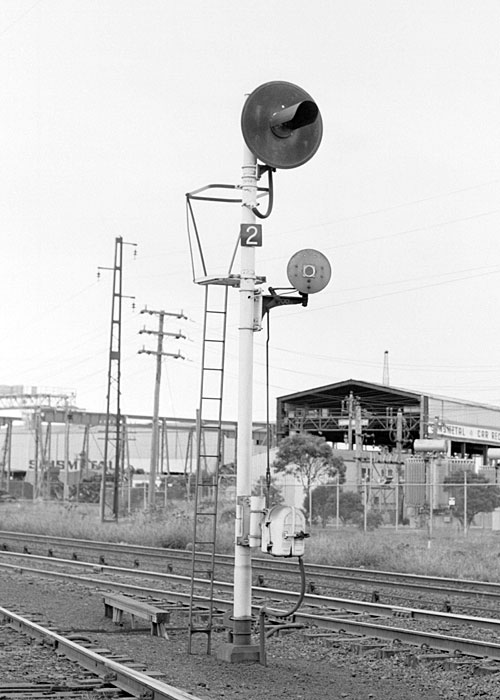 |
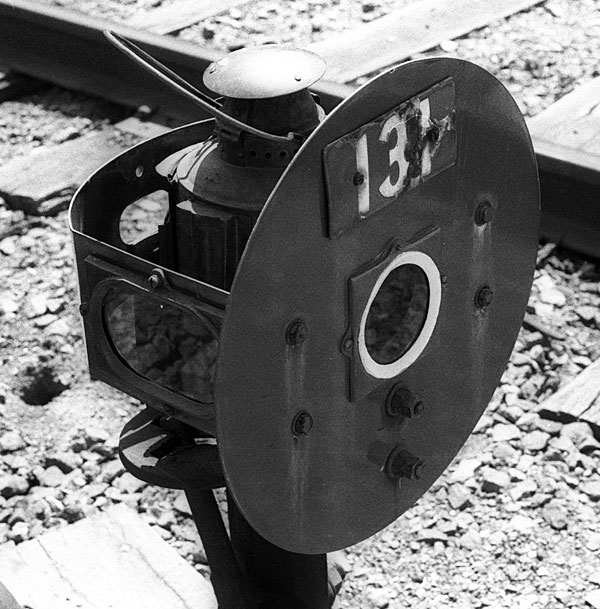 |
| Motor operated discs were very rare, the only examples I know of were at: Brooklyn, Warrnambool, Greensborough and Moe.
Motor operated discs were provided for one of two reasons. If a disc was an extremely long way from the signal frame, or if the disc was controlled by a electric panel. Photo at Brooklyn, late 1970's, courtesy Peter J. Vincent. |
Closeup of a ground disc with a kero lamp. The oval shaped hole at the back of the disc enabled the signalman to confirm that the disc had obeyed the signal lever.
|
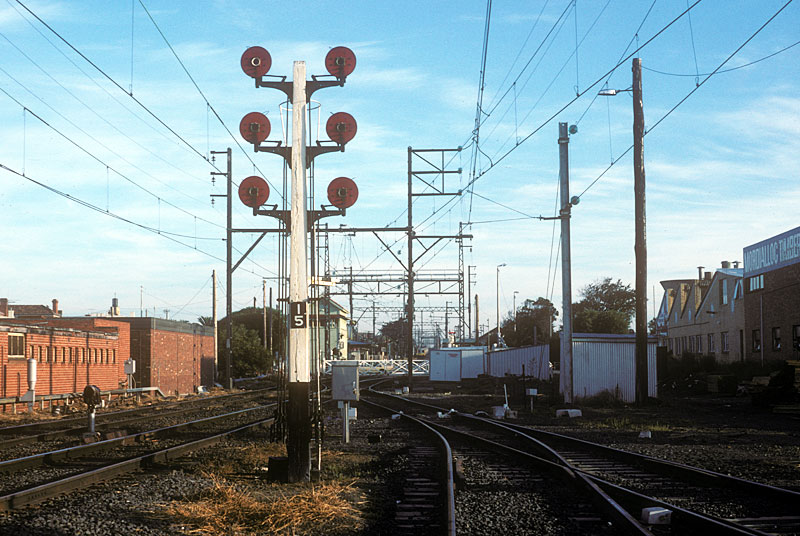
BELOW: A common use for disc signals back in the dreamtime was to regulate movements onto a turntable. The disc was interlocked with the turntable locking pin. In the mid 1940's most if not all turntable discs were abolished. This photo is at Woomelang.
